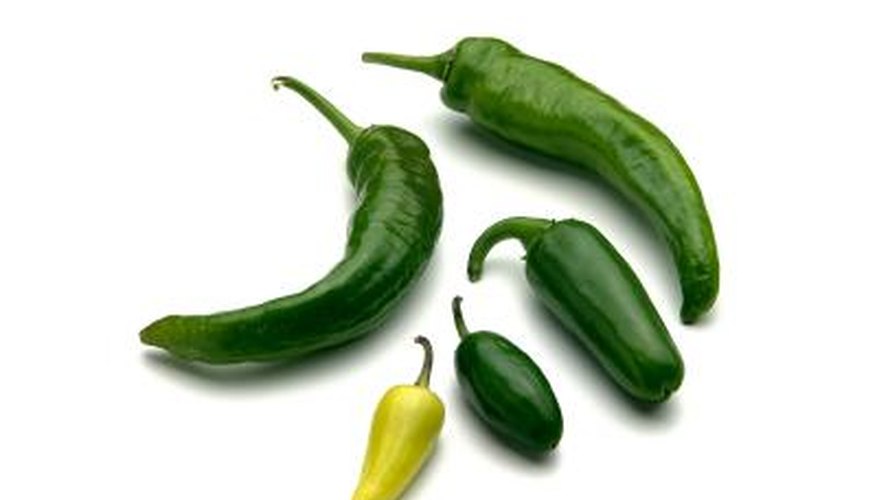The jalapeño pepper is a small pepper that packs a big punch. The average jalapeño is about 2 inches long and has a vibrant green colour when ripe. The skin is thick and leathery, and the inside contains tiny yellow seeds, which are the heart of this little pepper's heat. Jalapeños are one of the most popular chiles grown in Mexico and a common pepper found in salsas and other Mexican dishes. For some people, the powerful spice of the jalapeño is too much to handle, or they cannot find a fresh jalapeño locally; therefore, they need a substitute.
Serrano Pepper
The Serrano chile is a milder substitute for the jalapeño. The walls of this chile are thinner than the jalapeño and therefore easier to digest in fresh salsas or sauces. You can serve it raw, and it does not require prior steaming or charring for recipes.
Fresh Cayenne Chile
The cayenne chile pepper, also known as a finger chile, is popular in Cajun culture. Unlike the dried powder, fresh cayenne chile peppers pack a lot of heat and are listed as a four on the heat scale, which is hotter than a jalapeño. Green cayenne peppers are common during the summer season and deep red cayenne peppers are more abundant during the fall. No matter the colour, the pepper will pack more heat than a traditional jalapeño.
- The cayenne chile pepper, also known as a finger chile, is popular in Cajun culture.
- Unlike the dried powder, fresh cayenne chile peppers pack a lot of heat and are listed as a four on the heat scale, which is hotter than a jalapeño.
Poblano
The poblano pepper is the bell pepper of Mexican cuisine. This pepper is wide and deep; therefore, chefs often stuff it with items such as cream cheese, grated cheddar or rice. A poblano is mild in flavour and registers as a one on the heat scale. A fresh poblano is deep green and has a heart-shaped body and very waxy skin. It is best to char or grill a poblano before stuffing because of its thick skin.
- The poblano pepper is the bell pepper of Mexican cuisine.
- It is best to char or grill a poblano before stuffing because of its thick skin.
Anaheim Chile
The Anaheim chile is most commonly used in chiles rellenos. This chile pepper is mild in flavour and chefs often serve it raw or cooked in a variety of recipes. Anaheim chiles can be substituted for jalapeño peppers in sauces, casseroles, salsa, soups and purées.
Fresno Pepper
Many Spanish recipes call for the use of jalapeños in salsa. If you cannot find fresh jalapeños locally, seek out a Fresno pepper instead. These small, red and waxy peppers are similar to jalapeños on the heat scale, but the hottest varieties are common during the fall season. The wall of the Fresno pepper is thinner than a jalapeño's wall; therefore, you can dice it thicker in salsa recipes.
- Many Spanish recipes call for the use of jalapeños in salsa.
- The wall of the Fresno pepper is thinner than a jalapeño's wall; therefore, you can dice it thicker in salsa recipes.
Habanero
The habanero chile has fruity undertones, but is extremely hot in flavour. In fact, the habanero is one of the hottest chile peppers a consumer can purchase. The hottest varieties are common in the summer and are up to 2 inches long with bright orange skin. To reduce some of the heat of a habanero, remove the seeds and ribs of the inside of the pepper --- but be aware that even the skin is extremely fiery.
- The habanero chile has fruity undertones, but is extremely hot in flavour.
